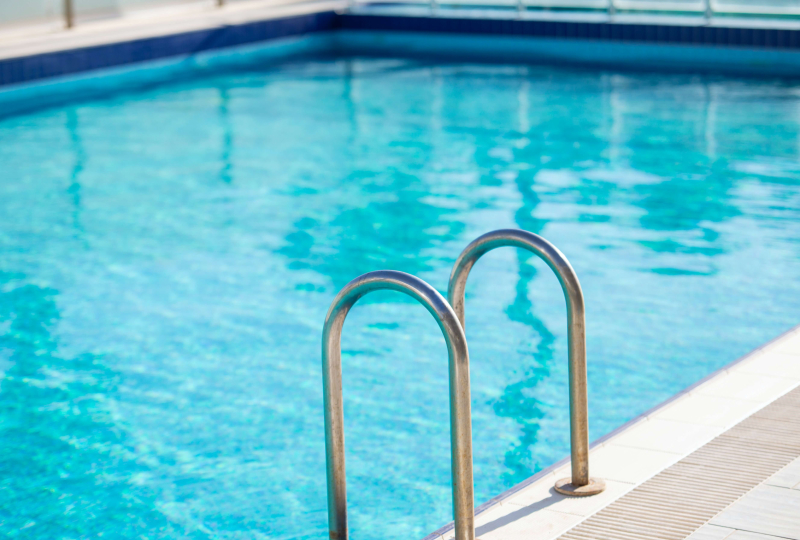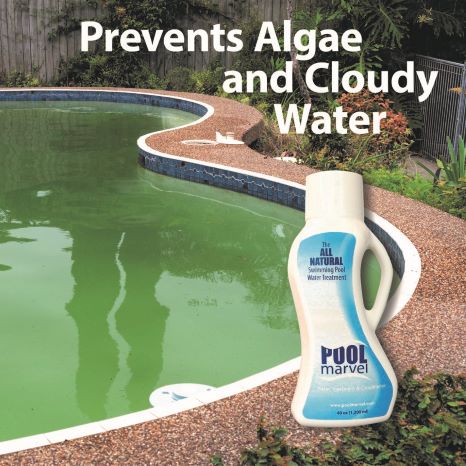
Pool Algaecide
Algaecide is a chemical whose active ingredients can destroy and prevent algae growth in swimming pools. Selecting the best one for your pool depends on your pool type, budget, and requirements. Polymer algaecides, copper-based algaecides, quat algaecides, sodium bromide, and natural algaecides are all options to consider.
What Are Pool Algaecides?
Pool algaecides can provide both pool algae treatment and algae control. They can kill small, isolated algae blooms and even invisible algae during the early stages of development. Pool algaecides are especially effective at preventing pool algae growth.
Pool algaecides should be paired with chlorine sanitizer to optimize pool algae control. They don’t sanitize pool water and typically aren’t necessary for regular pool maintenance.
Types Of Pool Algaecides
All pool algaecides are created to kill every type of algae, but some target specific kinds better than others. Each type of pool algaecide works in its own unique manner to control algae in swimming pools.
Polymer Algaecides
Polymer pool algaecides, also known as polyquat algaecides, feature long carbon chains that attach to algae, spread over the surface, and smother the cell. Although polyquats are more expensive than other quat algaecides, they’re effective at destroying stubborn algae blooms without causing staining or foaming.
Polymer algaecides are among the top active algaecides and are commonly available in 40 and 60 percent concentrations.
Copper-Based Algaecides
Relatively inexpensive to purchase, copper-based algaecides are widely available and are especially effective against green and black algae blooms.
The chemical’s active ingredient, copper, is toxic to algae, making it an effective method to control a bloom. The positively charged ions attach to algae and then enter the exterior cell walls to poison the nucleus. Silver algaecides work similarly to copper-based algaecides.
Copper-based algaecides are the most common type of algaecide available. Due to their lower dosage amounts, there’s the potential risk of an overdose if you have hard water or water with high metallic content. This can cause staining on your pool’s surface and turn blonde hair green.
Following the manufacturer’s directions and maintaining your pool’s normal chemistry can help avoid this risk.
Quat Algaecides
Quat pool algaecides or quaternary ammonium compounds disintegrate the outer protective membranes of algae cells, allowing chlorine to penetrate the nucleus. They’re the most economical pool algaecide to purchase and are available in a liquid form in concentrations ranging from 5 to 50 percent.
Quat pool algaecides won’t stain pool surfaces but can create foam that interferes with filtration.
Sodium Bromide
Sodium bromide isn’t technically an algaecide – instead, it’s used as a chemical delivery system. It partners with granular chlorine (pool shock) to convert bromide into hypobromous acid, a potent algae killer.
Sodium bromide effectively kills pool algae in out-of-control situations and best targets yellow or green algae unresponsive to high chlorine levels.
When used regularly, the hypobromous acid can consume a lot of a pool’s free chlorine, creating a lower residual.
Natural Algaecides
There are several natural methods to get rid of algae in pools without using chemicals. They include:
Cornmeal
This starchy natural algae killer for pools eliminates algae with its cellulose content.
To Use: Fill up a long cotton sock with ground-up cornmeal. For large pools, use more than one sock. Secure the end of the sock before placing it in your pool. Wait for the cornmeal to dissipate fully, then remove the sock from the pool. Vacuum up the dead algae.
Baking Soda
Baking soda extracts algae from the roots, eventually causing the algae to die. It works well as a spot treatment and will only slightly affect pool water chemistry.
To Use: Brush the walls and base of your pool with a baking soda/water mixture. Then vacuum up the dead algae.
Pool Marvel
Pool Marvel is a completely natural solution that contains enzymes extracted from plants. This water treatment and conditioner eliminates the nutrients that algae and bacteria require to survive, which helps prevent the growth and spread of algae.
To Use: Weekly, mix one capful (3.3oz) per 20,000 gallons of 54-86 degrees Fahrenheit pool water. Disperse evenly around the pool’s perimeter. Monitor the filter pressure for two hours. If opening or closing your pool, use double the dosage amount.
How To Use Algaecides In Pools
Preventing pool algae is easier to do than fixing green pool water. When there have been algae in your pool water in the past, it’s easier for future algae blooms to occur. Using the correct chemicals and practicing proper pool maintenance techniques can help keep algae at bay.
Maintain Proper Water Balance
In most algae bloom situations, pool algaecides work best after a chlorine shock treatment has rid the pool of algae. Doing so allows the algaecide to better support chlorine.
The following steps outline how to use algaecides:
- Clean the pool to remove heavy organic material. Leaves and grass clippings absorb algaecide, making it less effective.
- Complete a shock treatment.
- Allow your pool’s chlorine levels to return to normal – usually after at least 24 hours.
- Balance the pool water to the algaecide manufacturer’s recommendations. Before using algaecide, chlorine levels should drop to below five ppm.
- Read the product label for dosage instructions to calculate how much algaecide to put in your pool. The amount depends on the number of gallons your pool contains.
- Add the algaecide to your pool, following the package directions. Wait 30 minutes before swimming. Keep your circulation and filter systems active to help distribute the algaecide and remove suspended matter.
- After 24 hours, vacuum any dead algae debris in the pool. Clean your pool filter.
- Adjust your pool’s pH level and monitor the chlorine level.
Closely follow the directions and carefully measure the amount of algaecide. Depending on the type used, too much can create foamy water, eye and skin irritation, staining, or filter damage.
When To Use Algaecides In Pools
Chlorine shock is usually the best way to get rid of green algae. However, an algaecide may become necessary if you’re fighting more chlorine-resistant algae, such as mustard algae or black algae. Even then, the pool algaecide should work with chlorine or other sanitizers – not as an alternative to them.
Using an algaecide after a shock treatment is a great way to kill any possible remaining microscopic algae spores and prevent future growth.
It’s also helpful to add algaecide before you close your pool for the year and open it again in the spring. Pool water that sits covered and unused for months is a prime environment for algae to develop.
If desired, you can use a pool algaecide as part of your weekly maintenance routine. For best results, add a dose of algaecide to your pool water on sunny days, when algae are most likely to grow.

When To Avoid Using A Pool Algaecide
Since pool shock destroys algaecide, avoid using them at the same time. Otherwise, chlorine combines with the algaecide ingredients and makes the algaecide ineffective. Instead, shock your pool first, then wait for chlorine levels to return to normal before adding algaecide.
Correctly balancing your pool water and maintaining proper water chemistry helps prevent most pool algae. If you can maintain proper pool chemistry, regular use of an algaecide becomes more of a personal preference rather than a necessity.


